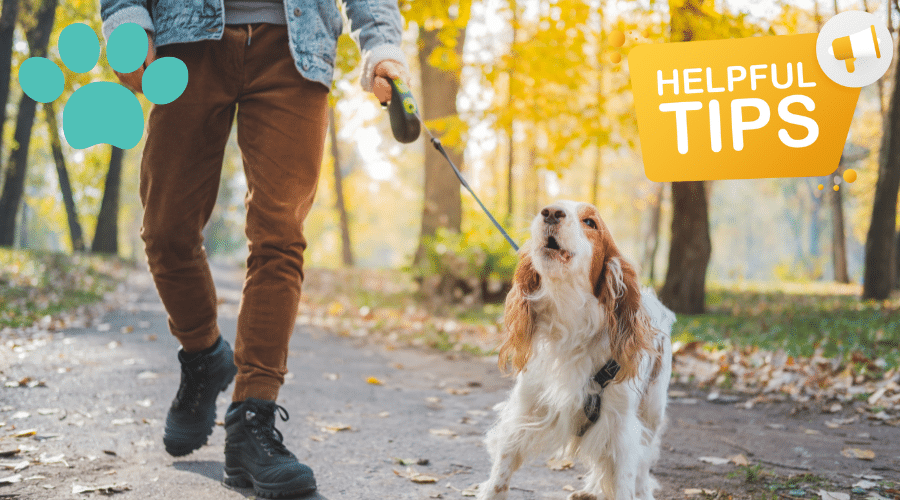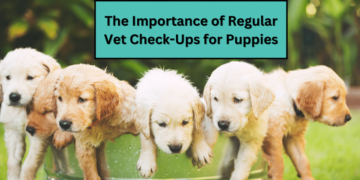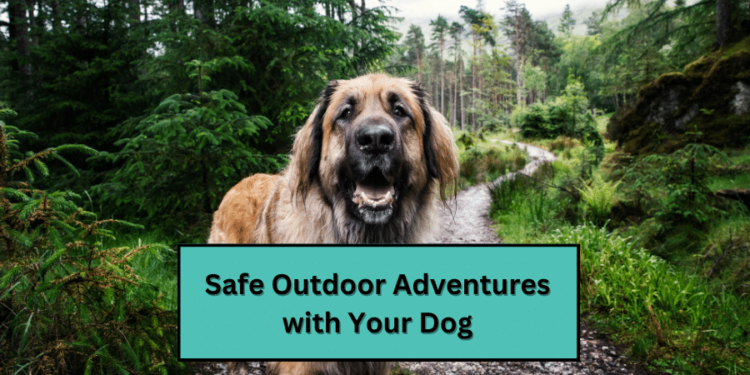Embarking on outdoor adventures with your dog can be one of the most rewarding experiences for both the pet and the owner. These activities not only provide an excellent source of exercise but also deepen the bond you share with your canine companion. From exploring nature trails to enjoying a day at the beach, the possibilities for fun and adventure are endless. However, ensuring these experiences are safe and enjoyable is paramount.
Safety considerations are crucial to prevent accidents and ensure both you and your dog make the most of your outdoor time together. This guide will delve into how to prepare for and safely enjoy various outdoor activities with your dog, ensuring every adventure is a joyful and secure experience.
Preparing for Outdoor Adventures with Your Dog
Before setting out on any outdoor adventure with your dog, it’s essential to assess and understand their physical capabilities and limitations. This understanding will help you choose activities that are both enjoyable and safe for your pet.
Assessing Your Dog’s Fitness Level:
- Know Their Limits: Consider your dog’s age, breed, health condition, and current fitness level. Some breeds are better suited for strenuous activities than others, and puppies or older dogs may have more specific needs and limitations.
- Consult with a Veterinarian: Before starting any new outdoor activity, especially if it’s physically demanding, consult with your veterinarian. They can provide guidance based on your dog’s health and fitness level.
Essential Gear for Outdoor Activities:
- Leash and Harness: A sturdy leash and a well-fitting harness are essential for most outdoor activities. For hiking, consider a harness with a handle for additional control and safety.
- Portable Water and Bowl: Always bring enough water for both you and your dog and a collapsible bowl for easy drinking.
- Protective Gear: Depending on the activity and terrain, protective gear such as booties can protect your dog’s paws from hot pavement, sharp rocks, or icy conditions.
- Identification Tags and Microchip: Ensure your dog has proper identification tags and a microchip, in case you get separated.
- First Aid Kit: Carry a basic first aid kit for dogs that includes items like bandages, antiseptic wipes, and tweezers for tick removal.
- Weather-Appropriate Clothing: For certain weather conditions, your dog may require protective clothing such as a raincoat or a warm jacket.
Choosing the Right Activities
When it comes to outdoor activities with your dog, the choices are abundant, but selecting the right ones is key to ensuring a safe and enjoyable experience for your canine companion.
Dog-Friendly Outdoor Activities:
- Hiking: A popular choice for many dog owners. Ensure the trails are dog-friendly and consider your dog’s stamina and the difficulty of the terrain.
- Swimming: Great for dogs who love water. Choose safe, calm waters and always supervise your dog. Some dogs may need a life jacket for additional safety.
- Fetch and Frisbee: Ideal for open spaces like parks. These activities are excellent for exercise but monitor for signs of fatigue.
- Agility Training: Set up a DIY course in your backyard or join an agility club. This is great for mental and physical stimulation.
- Camping: A wonderful way to bond with your dog in nature. Make sure your dog is comfortable staying in unfamiliar surroundings overnight.
Selecting Activities Based on Your Dog’s Needs:
- Consider Breed and Age: Some breeds are better suited for certain activities. For instance, breeds like Retrievers and Spaniels often love swimming, while brachycephalic breeds (short-nosed) might struggle with strenuous hiking.
- Age and Health: Puppies and senior dogs have different endurance levels and health considerations. Adjust activities to suit their capabilities.
- Personal Preferences: Just like people, dogs have personal preferences. Observe what types of activities your dog seems to enjoy and tailor your choices accordingly.
Training and Commands for Outdoor Safety

Proper training and obedience commands are crucial for ensuring safety during outdoor adventures. These not only help in managing your dog in different environments but also ensure their safety and the safety of others.
Essential Training and Commands:
- Recall Training: Perhaps the most important command for outdoor safety is a reliable recall. This ensures your dog will return to you promptly when called, a crucial skill in both off-leash and potentially dangerous situations.
- Leash Manners: Training your dog to walk nicely on a leash without pulling is essential, especially in crowded or high-traffic areas.
- Stay and Wait Commands: These commands are useful in controlling your dog’s movements, especially at road crossings or when encountering wildlife.
- Leave It: This command helps prevent your dog from picking up or eating harmful objects.
The Importance of Consistent Training:
- Consistent reinforcement of these commands in different settings enhances your dog’s response. Practice in both quiet and more distracting environments.
- Consider enrolling in a training class or working with a professional trainer to strengthen these skills, especially if you plan to engage in more adventurous activities like hiking in challenging terrain.
Health and Safety Considerations
Ensuring your dog’s health and safety is paramount when embarking on outdoor adventures. Several key considerations can help protect your canine companion from common outdoor hazards.
Vaccinations and Parasite Prevention:
- Vaccinations: Keep your dog’s vaccinations up to date. These are essential for protecting against diseases they may encounter outdoors.
- Parasite Prevention: Regularly use flea and tick prevention methods, and consider heartworm prevention, especially in areas where these pests are prevalent.
First Aid Knowledge:
- Basic First Aid: Familiarize yourself with basic pet first aid. Carry a pet-specific first aid kit during your outdoor activities.
- Emergency Contacts: Always have the contact information for your veterinarian and a local emergency animal hospital, especially when traveling to new areas.
Recognizing and Avoiding Hazards:
- Heatstroke: Be aware of the signs of heatstroke, such as excessive panting, drooling, and lethargy. Avoid strenuous activities during the hottest parts of the day and always provide plenty of water.
- Cold Weather: In cold conditions, monitor your dog for signs of discomfort or hypothermia. Breeds with thin coats may require protective clothing.
- Wildlife Encounters: Educate yourself about the local wildlife and how to safely navigate encounters. Keep your dog on a leash in areas with known wildlife presence.
Navigating Public Spaces and Etiquette

Visiting public outdoor spaces with your dog requires adherence to certain rules and etiquette to ensure a pleasant experience for everyone.
Understanding and Following Rules:
- Leash Laws: Abide by local leash laws. Keep your dog on a leash in designated areas to ensure their safety and the safety of others.
- Access Restrictions: Be aware of and respect areas where dogs are not allowed. This can include certain trails, beaches, or conservation areas.
Practicing Good Etiquette:
- Clean Up: Always clean up after your dog. Carry waste bags and dispose of them properly.
- Controlled Behavior: Ensure your dog is well-behaved and does not jump on or intimidate other people or animals.
- Noise Control: Keep your dog’s barking and noise levels in check, especially in quiet natural settings or crowded public areas.
Consideration for Others:
- Giving Space: Be mindful of other people’s space, especially those who may be fearful or uncomfortable around dogs.
- Children and Other Pets: Keep a close eye on interactions with children and other pets. Not all pets or people are comfortable with dogs.
Post-Adventure Care
Proper post-adventure care is crucial in ensuring that your outdoor excursions with your dog remain a healthy and enjoyable experience. Taking the time to perform thorough check-ups after each adventure can help prevent health issues and ensure your dog’s well-being.
Post-Adventure Check-Ups:
- Inspect for Ticks and Injuries: Carefully check your dog’s coat and skin for ticks, burrs, or injuries. Pay special attention to hidden areas like under the collar, behind the ears, and between the toes.
- Skin and Paw Care: Look for any signs of cuts, sores, or irritations on their paws and skin. Consider rinsing your dog’s paws to remove any dirt or harmful substances they may have stepped in.
- Parasite Prevention: If you’ve been in an area with a high tick population, follow up with appropriate tick prevention measures and keep an eye out for signs of tick-borne diseases.
Hydration and Rest:
- Rehydration: Ensure your dog rehydrates adequately after the activity. Offer fresh water and monitor their intake to ensure they are properly rehydrated.
- Adequate Rest: Allow your dog plenty of time to rest and recuperate, especially after strenuous activities. Just like humans, dogs need time to recover from physical exertion.
Conclusion
Exploring the great outdoors with your dog can be a tremendously rewarding experience, offering both physical exercise and a unique bonding opportunity. However, ensuring the safety and well-being of your canine companion is paramount. From preparing for your adventures with the right gear and training to choosing activities that suit your dog’s capabilities, and from understanding the importance of health and safety considerations to post-adventure care, each aspect plays a critical role in creating a safe and enjoyable environment.
As you embark on these adventures, remember to embrace the joys of the outdoors while maintaining a strong commitment to safety and responsibility. By doing so, you and your furry friend can enjoy countless memorable moments in the great outdoors, filled with fun, exploration, and companionship.




















































Discussion about this post